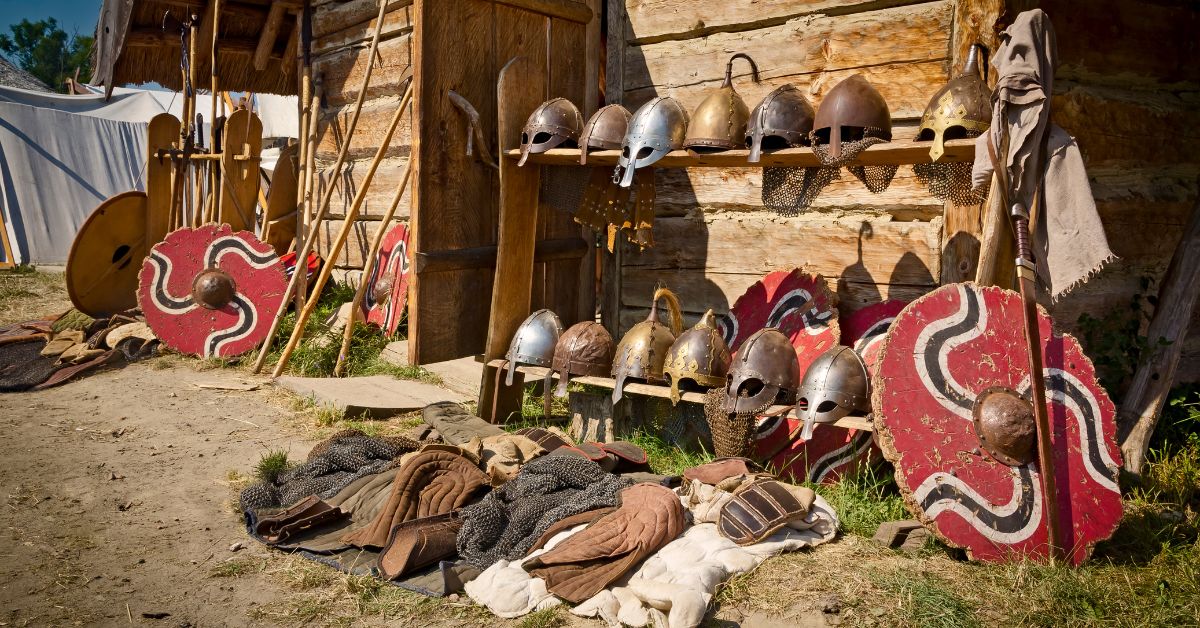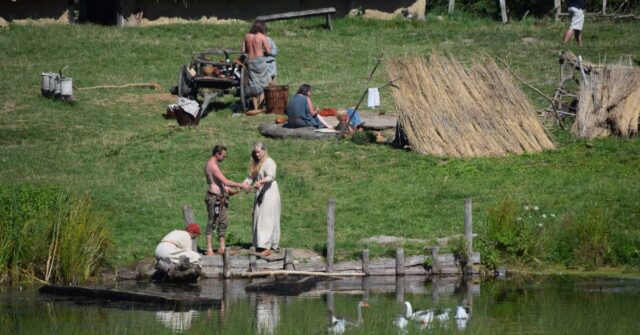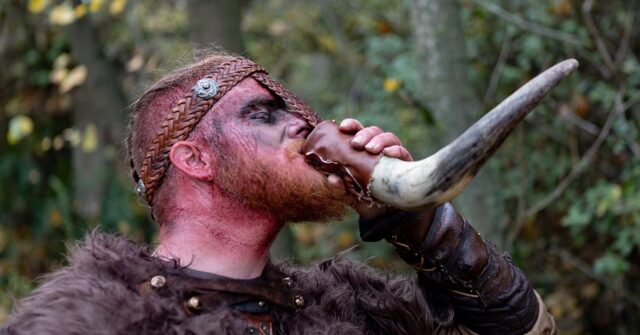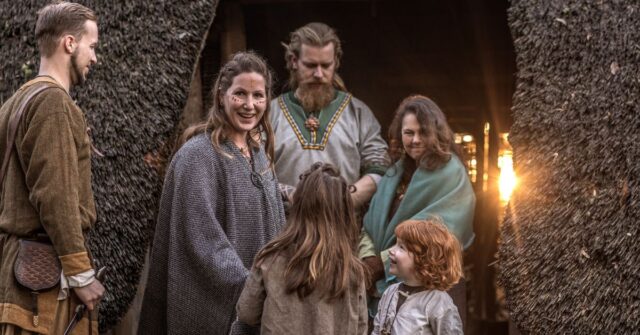The Viking Age is often depicted with images of warriors wielding axes, but their arsenal was far more extensive.
This blog post delves into the variety of weapons used by Vikings, highlighting their significance, craftsmanship, and the impact they had on Viking society and warfare.
Understanding the full range of Viking weaponry provides a deeper appreciation of their culture and martial prowess.
This comprehensive exploration covers swords, spears, bows, and shields, revealing the complexity and sophistication of Viking combat tools.
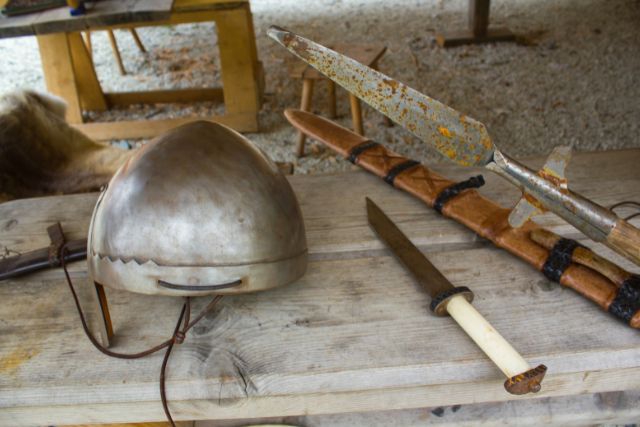
Introduction
The Viking Age, spanning roughly from the late 8th century to the early 11th century, is often associated with fierce warriors wielding iconic axes.
However, the Viking arsenal was much more diverse and sophisticated. Their weaponry was not just for battle but also held cultural and symbolic significance.
Overview of Viking Weaponry
Viking weaponry was a blend of practical tools and symbols of power. These weapons included swords, axes, spears, and bows, each serving different purposes in both daily life and combat.
The craftsmanship of these weapons showcased the Vikings’ advanced metallurgical skills, with each piece meticulously designed for effectiveness in battle and symbolic value.
The Importance of Weapons in Viking Culture
In Viking society, weapons were not merely tools of war but also indicators of status and honor. Warriors were often buried with their weapons, which were believed to accompany them to the afterlife.
The right to carry arms was a significant aspect of Viking identity, symbolizing freedom and social standing.
Weapons were also used in ceremonial practices and were often named, indicating their importance in the lives of their owners.
Swords: Prestige and Power
Swords were the most prestigious weapons in Viking culture. They were expensive to make and thus owned primarily by the wealthy and noble.
These weapons were not only functional in battle but also held significant symbolic value, representing the social status and prowess of their owners.
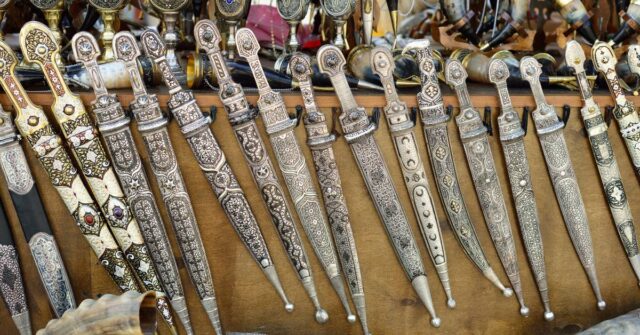
The Craftsmanship of Viking Swords
Viking swords were typically made from pattern-welded steel, a technique that involved forging together multiple layers of iron and steel.
This method created strong, flexible blades that could withstand the rigors of combat.
The process of making these swords required immense skill, and the best swords were highly prized for their durability and sharpness.
Types of Viking Swords
There were various types of Viking swords, categorized by their hilt and blade designs. One of the most famous types is the Ulfberht sword, known for its high-quality steel and inscriptions.
These swords were rare and considered the finest examples of Viking sword-making.
The Ulfberht Swords
The Ulfberht swords were a mark of superior craftsmanship. Made from high-carbon steel, these swords were strong, flexible, and sharp.
They were so advanced that they remained unmatched until the Industrial Revolution. The name “Ulfberht” was often inscribed on the blade, signifying the sword’s authenticity and quality.
The Symbolism and Status of Swords
Swords held immense symbolic value in Viking culture. They were often named and passed down through generations, symbolizing the continuity of family and tradition.
In literature and sagas, swords were frequently mentioned to highlight the bravery and honor of their owners.
Owning a sword was a sign of high social status and was often associated with leadership and nobility.
Axes: The Everyman’s Weapon
Axes were the most common weapons among Vikings due to their affordability and versatility. They served both as tools for daily tasks and as formidable weapons in battle.
The design and construction of Viking axes made them effective for close combat and throwing.
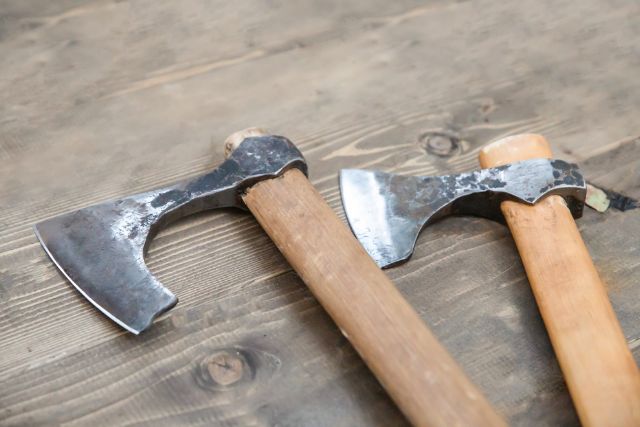
Common Types of Viking Axes
There were several types of Viking axes, each with unique features suited to different combat situations. The most common types included the bearded axe and the Dane axe.
These axes varied in size and design, with some having long handles for increased reach and others designed for throwing.
The Dane Axe
The Dane axe was a large battle axe with a long handle, often as tall as a man. It had a broad, crescent-shaped blade, making it highly effective in battle.
This axe required both hands to wield, allowing for powerful swings that could penetrate armor and shields.
The Bearded Axe
The bearded axe featured an extended lower blade, which provided additional cutting power and versatility.
This design allowed the user to hook and pull an opponent’s shield or weapon, giving them a tactical advantage in combat.
The bearded axe was a favorite among Viking warriors for its effectiveness and practicality.
Axes in Viking Society
In Viking society, axes were not just weapons but also essential tools for daily life. They were used for chopping wood, building ships, and other tasks.
The versatility and utility of axes made them accessible to all Vikings, regardless of social status. In battle, axes were favored for their ability to inflict significant damage and their ease of use.
Spears: Versatile and Ubiquitous
Spears were among the most common weapons used by Vikings. They were simple to make and highly effective in both offensive and defensive roles.
Spears were used for throwing at distant enemies and for thrusting in close combat, making them versatile weapons on the battlefield.
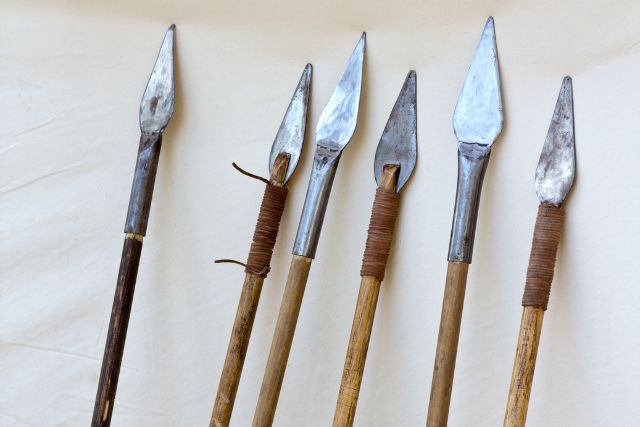
The Construction of Viking Spears
Viking spears typically consisted of a wooden shaft, usually made from ash, and a metal tip. The spearheads were often barbed or leaf-shaped, designed to penetrate armor and inflict serious wounds.
The length of the spear varied, with some being short for throwing and others long for thrusting.
Usage of Spears in Combat
In combat, spears were used both as ranged and melee weapons. Vikings would throw spears to break enemy lines or use them in hand-to-hand combat.
The versatility of spears made them ideal for various fighting techniques, and skilled warriors often carried multiple spears for different purposes.
Spear Types and Their Tactical Advantages
There were several types of Viking spears, each with distinct tactical advantages. Throwing spears, or javelins, were lightweight and designed for distance.
Thrusting spears were longer and heavier, suited for close combat. The ability to use spears in multiple ways made them a staple in Viking warfare.
Bows and Arrows: The Hunter’s Tool
Bows and arrows were crucial for both hunting and warfare in Viking society. Archery required skill and practice, and proficient archers were highly valued in battle.
Bows provided a strategic advantage by allowing Vikings to attack from a distance.
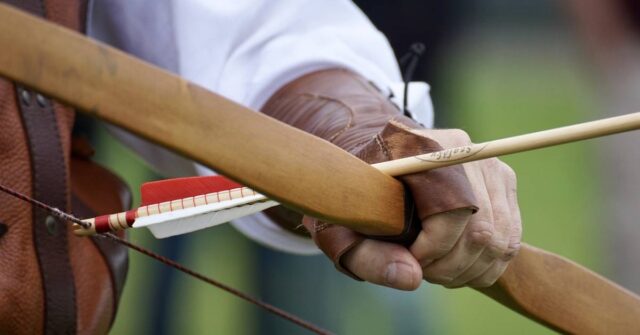
Materials and Construction of Viking Bows
Viking bows were typically made from yew, ash, or elm, chosen for their flexibility and strength. The bows were long and powerful, capable of shooting arrows over great distances.
Arrows were made from wood and tipped with iron or steel, designed to pierce armor and flesh.
The Role of Archery in Viking Warfare
Archery played a significant role in Viking warfare, providing a means to weaken enemy forces before engaging in close combat.
Skilled archers could take down opponents from a distance, reducing the risk to themselves and their comrades.
Archers often targeted key figures in the opposing force, such as commanders or standard-bearers, to disrupt enemy formations.
Famous Viking Archers
While less commonly highlighted than their sword- or axe-wielding counterparts, some Viking archers gained fame for their skill.
Tales and sagas recount their feats, showcasing the importance of archery in Viking battles. These archers were respected for their precision and bravery, contributing significantly to Viking victories.
Knives & Seaxes: Essential Tools and Weapons
While swords, axes, and spears often take center stage in discussions about Viking weaponry, knives and seaxes were equally vital to Viking life.
These blades were versatile tools used in everyday activities and served as crucial weapons in combat.
Their practicality, craftsmanship, and cultural significance made them indispensable to the Vikings, reflecting their resourcefulness and martial skills.

Knives: Versatile Everyday Tools
Knives were indispensable in Viking life, serving both practical and combat purposes. Crafted from iron with handles of wood, bone, or antler, they varied in size for different tasks.
Small knives were used for food preparation and crafting, while larger ones were reserved for heavier duties and as secondary weapons in battle.
Always carried on a belt, knives symbolized readiness and resourcefulness in Viking society.
Seaxes: The Fighting Knives
Seaxes were larger, fighting knives that doubled as tools.
Made from high-quality iron or steel, with straight or slightly curved single-edged blades, they ranged from small utility sizes to large sword-like weapons.
Their robust construction made them effective for slashing and thrusting in close combat.
Seaxes were often decorated, reflecting their owner’s status and skill, and were carried alongside primary weapons for backup in battle.
Cultural Significance
Both knives and seaxes held cultural importance, were used in rituals, and were buried with their owners. They symbolized status, skill, and readiness for both daily life and warfare.
Decorated and named, these blades were cherished possessions passed through generations, reflecting the Vikings’ artistry and their belief in the protective power of weapons.
Shields and Armor: Protection and Strategy
Viking shields and armor were essential for protection in battle. Shields were used not only for defense but also as offensive tools, while armor provided vital protection against weapons.
The combination of these elements made Viking warriors formidable opponents.
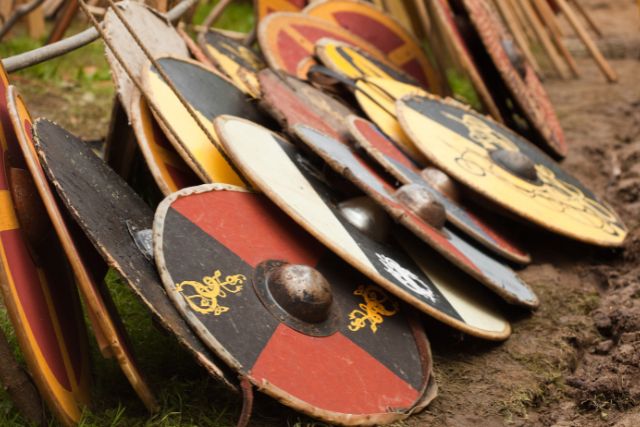
The Design and Use of Viking Shields
Viking shields were typically round and made from wood, often covered with leather and reinforced with a metal boss.
They ranged from 75 to 120 centimeters in diameter, providing extensive coverage. The round shape allowed for easy maneuverability and effective use in both defense and offense.
The Shield Wall Tactic
One of the most famous Viking battle tactics was the shield wall or skjaldborg. Warriors would stand close together, interlocking their shields to form a solid barrier.
This formation provided a strong defense against arrows and melee attacks, allowing Vikings to advance or hold their ground effectively.
Types of Viking Armor
Viking armor varied based on the wearer’s status and wealth. Common armor included padded clothing, leather jerkins, and chainmail.
Wealthier warriors might also wear helmets with nose guards. Contrary to popular belief, Viking helmets did not have horns.
Armor provided essential protection, but it was also designed to allow mobility in combat.
The Myth of Horned Helmets
The image of Vikings wearing horned helmets is a modern misconception. No archaeological evidence supports the existence of such helmets in Viking times.
This myth likely originated in the 19th century due to romanticized depictions of Vikings in art and opera.
In reality, Viking helmets were practical and functional, designed to protect the head without unnecessary adornments.
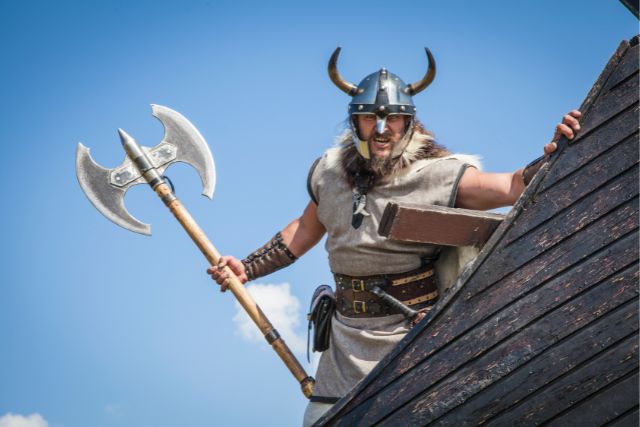
The Role of Weapons in Viking Society
Weapons were integral to Viking society, influencing social structures, cultural practices, and Viking warfare.
Weapons were not just tools of war but also integral to their societal structures, cultural practices, and individual identities.
Weapons as Status Symbols
In Viking society, weapons were potent symbols of status and power. The quality and type of weapon a Viking owned often indicated their social rank.
Swords, for instance, were rare and expensive, typically owned by the elite. The craftsmanship and materials used in these weapons also reflected the owner’s wealth and status.
Named and often elaborately decorated, these weapons were not just practical tools but also heirlooms passed down through generations.
Rituals and Sacrifices Involving Weapons
Weapons held deep ritualistic and symbolic significance in Viking culture. They were often used in religious ceremonies and sacrifices.
Swords and other weapons were sometimes thrown into lakes or bogs as offerings to the gods, a practice believed to honor deities and seek their favor.
These rituals underscored the spiritual connection Vikings had with their weapons, viewing them as extensions of their own identity and power.
Weapons in Viking Burial Practices
Viking burial practices often included placing weapons alongside the deceased.
This practice was not just for warriors; even farmers and craftsmen were buried with their weapons, symbolizing their readiness for the afterlife.
The inclusion of weapons in graves highlighted the importance of martial prowess and readiness for combat, even in death.
These burials also served as a testament to the individual’s status and achievements during their lifetime.
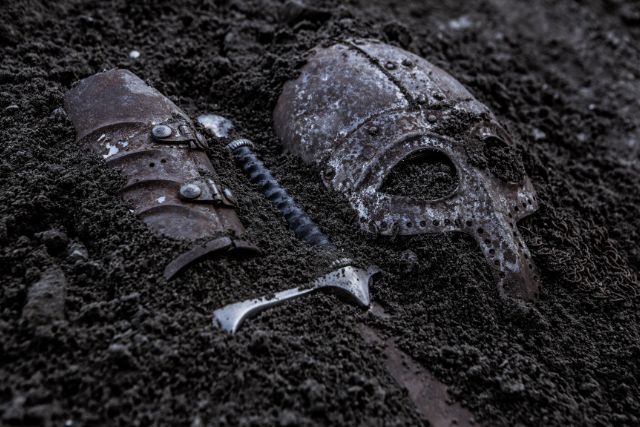
Conclusion
The Vikings were masterful warriors whose weapons played a crucial role in their conquests and daily life.
From the prestigious swords to the versatile axes and spears, each weapon was a testament to their advanced craftsmanship and strategic acumen.
Understanding the full range of Viking weaponry provides a deeper appreciation of their culture and the pivotal role these tools played in their society.
Summary of Viking Weaponry
The diversity and sophistication of Viking weapons underscore their reputation as fearsome warriors.
Each type of weapon, from the esteemed swords to the common axes and spears, served a specific purpose and held significant cultural and symbolic meaning.
This comprehensive overview highlights the craftsmanship, usage, and impact of these weapons on Viking society and warfare.
The Legacy of Viking Weapons
The legacy of Viking weapons extends beyond their historical use in battles and raids. These weapons have left an indelible mark on history, influencing modern perceptions of the Viking Age.
Museums and archaeological findings continue to uncover and showcase Viking weapons, offering valuable insights into their society and way of life.
The enduring fascination with Viking weaponry reflects the lasting impact of these formidable tools of war.

